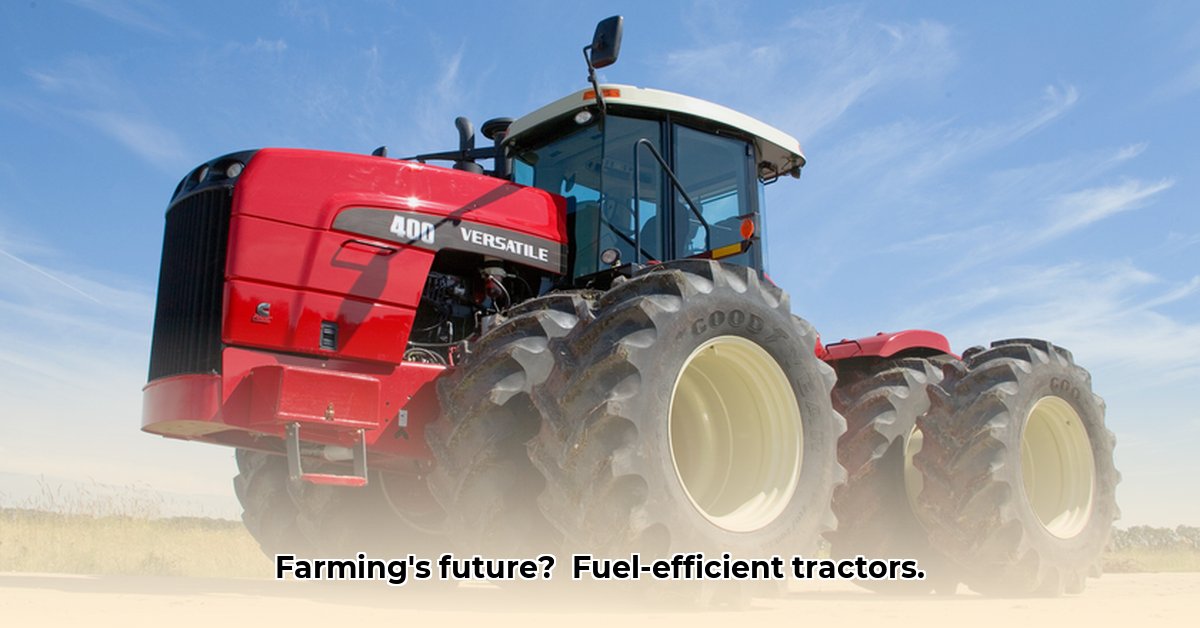
Sustainable Power in Modern Agriculture: The Cummins Approach
Farming's future hinges on sustainability. Feeding a growing global population requires efficient, environmentally responsible agricultural practices. Tractors, the workhorses of farming, are a key component of this effort. This article critically examines Cummins' contribution to sustainable agriculture, focusing on the fuel efficiency and environmental impact of their tractor engines. We analyze Cummins' claims, comparing them to available data and competitor technologies, offering actionable recommendations for farmers, manufacturers, and policymakers. Key areas of focus include lifecycle analysis, emissions data comparison, and total cost of ownership (TCO) assessments to determine the true sustainability of Cummins tractors. For more information on tractor maintenance, see this helpful resource on tractor oil capacity.
Evaluating Cummins' Sustainability Claims: A Data-Driven Approach
Cummins promotes fuel efficiency and reduced operational costs for its engines. However, comprehensive data supporting these claims remains limited. To accurately assess their sustainability, we need concrete evidence. What are the complete lifecycle environmental impacts? A comprehensive lifecycle assessment (LCA) – analyzing the entire process from manufacturing to disposal – is essential for a complete picture. Does Cummins' sustainability strategy extend to alternative fuels like biofuels or hydrogen? The absence of readily available data on these crucial aspects hinders a thorough evaluation. How does the long term durability of the engine affect this evaluation? Is the savings from extended life offset by higher initial purchase price?
Comparative Analysis: Cummins vs. Competitors
A true assessment requires direct comparisons with major competitors like John Deere and AGCO. Key metrics for comparison include fuel efficiency (liters/hectare), CO2 emissions (grams/kilowatt-hour), NOx and particulate matter emissions (grams/kilowatt-hour), and total cost of ownership (TCO). The lack of readily accessible and comparable data across these metrics prevents a definitive comparative analysis. What is the true impact of fuel and energy cost variation across differing geographic locations. This further complicates a straightforward comparison.
"Without transparent, comparable data, farmers and policymakers cannot make informed decisions", states Dr. Anya Sharma, Professor of Agricultural Engineering at the University of California, Davis.
Actionable Recommendations for a Sustainable Future
Achieving sustainable agriculture requires a collaborative effort. The following actions are crucial:
1. Cummins:
a. Conduct and publicly release comprehensive LCAs for all agricultural engine models. Quantify fuel efficiency gains with verifiable data. b. Invest in R&D for alternative fuels (biofuels, hydrogen) and electric or hybrid tractor systems.
2. Original Equipment Manufacturers (OEMs):
a. Demand complete LCA data from engine suppliers (including Cummins). b. Prioritize the integration of eco-friendly powertrain options in tractor designs.
3. Farmers:
a. Accurately track fuel usage and operational costs, sharing this information to identify best practices. b. Investigate and leverage government grants and incentives for sustainable farming technologies.
4. Policymakers:
a. Implement stricter emission standards to incentivize cleaner technology development. b. Develop clear support mechanisms for alternative fuel infrastructure and electric/hybrid farm machinery.
The Path Forward: Data Transparency and Collaborative Innovation
The transition to sustainable agriculture is a complex undertaking, requiring transparency, data-driven decision-making, and collaboration among all stakeholders. Further research into long-term effects of various fuel types and comprehensive economic impact assessments are vital for creating true, lasting change. The future of farming depends on it. The lack of widely accessible and comparable data currently hinders a complete understanding of the true sustainability of Cummins tractors and the wider agricultural machinery market. Further investigations are needed and are highly recommended.